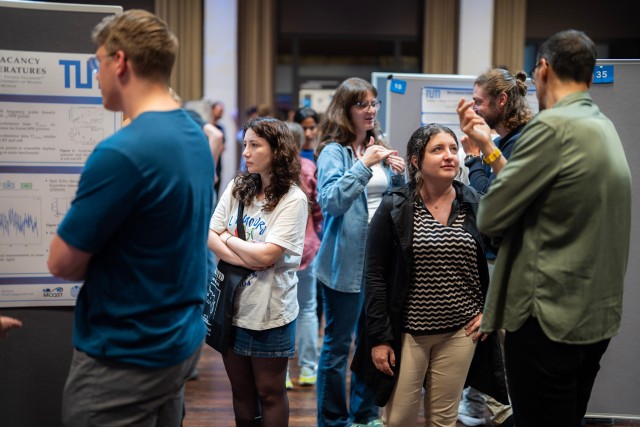The Quantum Talents Symposium in Munich
The Symposium is designed to bring together outstanding PhD students and early-career postdocs from all over the world to present their groundbreaking research work in the field of quantum science and technology.
Our mission: to provide a platform for emerging young researchers, facilitate knowledge sharing, inspire collaboration, and promote career opportunities in quantum science.
Special attention is given to increasing diversity in the field of quantum science, fostering a more inclusive and equitable environment that values the contributions of researchers from all backgrounds.
Promoting opportunities in quantum science
We are thrilled to host the second edition of the Quantum Talents Sympoiusm on 24 - 25 November 2025 at the Max Planck Institute of Quantum Optics, Garching. Each year's Symposium has a different theme, and this year will focus on quantum computing, including the development, operation and applications of quantum computers.
You can read all about
last year's event and the awardees in the news section and on the
QuantumLeaks website, the foundation which awarded the Entanglement Prize 2024.

The 2025 Quantum Talents Symposium
Date & Venue
24-25 November 2025
Max Planck Institute of Quantum Optics, Garching, Munich
Symposium Partners
Munich Quantum Valley (MQV), Munich Center for Quantum Science and Technology (MCQST), International Max Planck Research School for Quantum Science and Technology (IMPRS-QST), Women in Quantum Optics Postdoctoral Program (WiQO) of the Max Plank Institute of Quantum Optics, LMU Munich, TU Munich
Eligibility
We invite applications from outstanding and driven early-career researchers from around the globe, working in the field of quantum computing. Specifically, we invite PhD students in their 3rd year and above and postdocs with up to two years of experience. Applications should discuss our focus theme of quantum computing.
The mission of the Symposium greatly aligns with my vision of incubating an interdisciplinary environment for quantum science, and was an exclusive opportunity for me to share my research. At the same time, I had the chance to use my unique experiences to contribute in discussions across the different communities present, and potentially establish future collaborations with researchers in Munich. -- Nathanan Tantivasadakarn (Finalist 2024, Caltech)
Partners & Sponsors

Contact
For further inquiries or additional information, contact us at quantum-talents-munich[at]mcqst.de